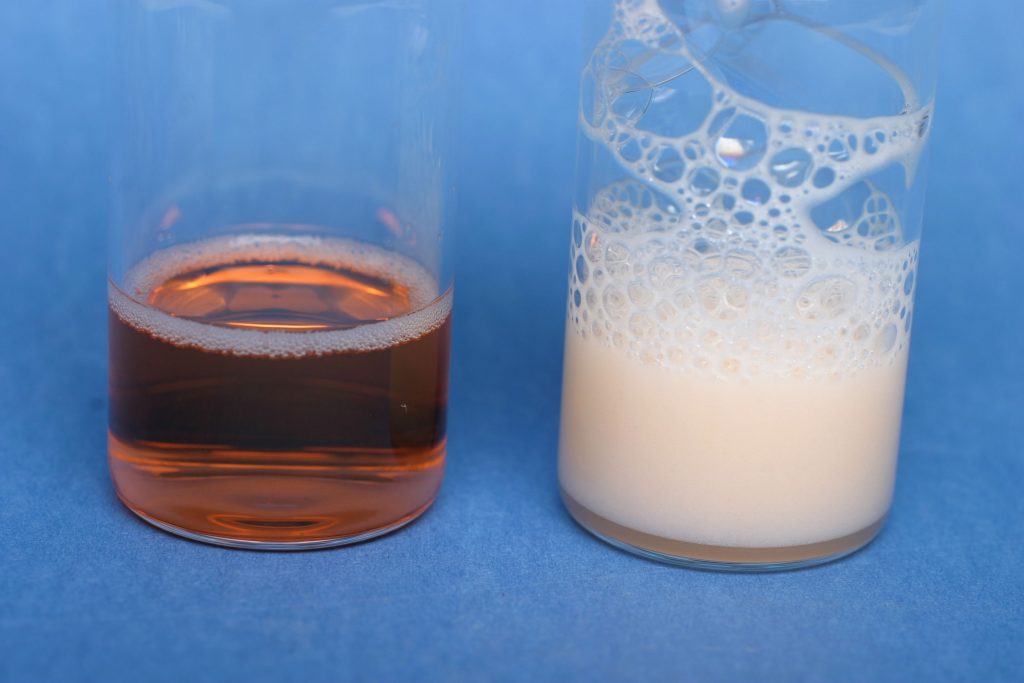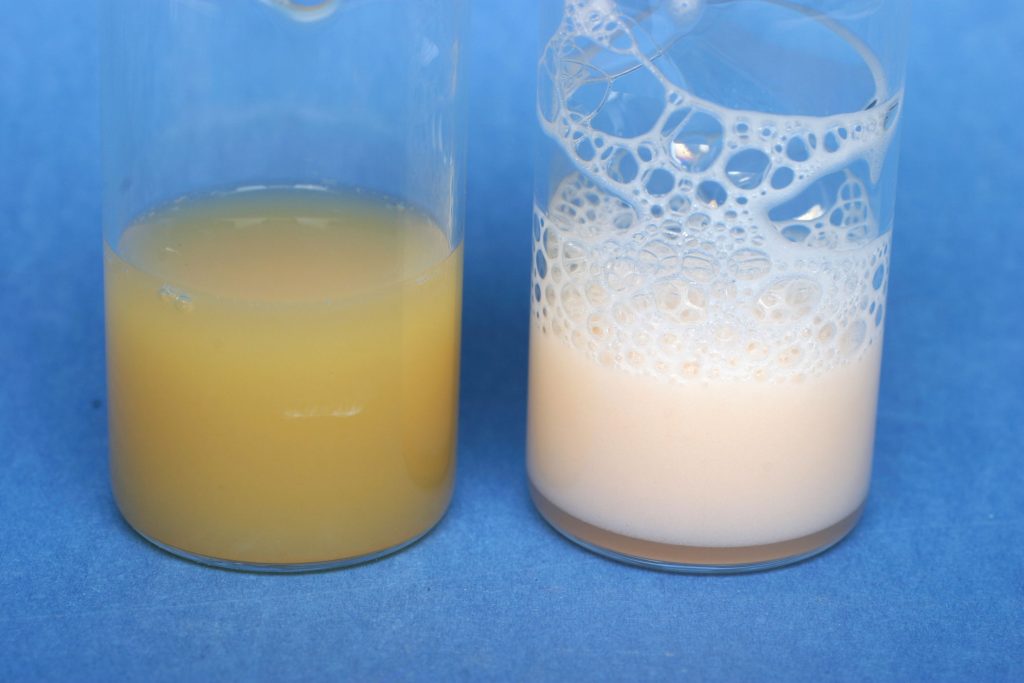
Download 300dpi JPEG image, “sample 1.jpg,” 236K (Media are welcome to download/publish this image with related news stories.)
LIVERMORE, Calif. – A unique class of materials developed by researchers at Sandia National Laboratories in Livermore, Calif., may prove useful in textile manufacturing, biomedical diagnostics, and other applications requiring the modification of surface properties of liquids or solids.
Sandia’s cleavable (easily separated) surface active agent (or, “surfactant”), based on Diels-Alder chemistry, differs from other surfactants in that it can be thermally degraded and easily removed in an inexpensive, environmentally harmless manner.

Download 300dpi JPEG image, “sample 3.jpg,” 264K (Media are welcome to download/publish this image with related news stories.)
Scott Vaupen, a business development associate at Sandia, said commercially available thermally cleavable surfactants would enable industrial practices where it is desirable to diminish foaming or surface-active properties over time, in drug delivery, and where biodegradability is a primary concern. “They could prove useful in diverse fields as textile processing, electronics fabrication, sample management, wastewater processing, cleavable phase transfer reagents, and other applications,” said Vaupen.
Traditional surfactants are difficult to remove from processes in which they are employed. Some surfactant systems require the invasive addition of an acid or base to separate the surfactant into fragments in order to eliminate surface active properties. Such invasive use of additional reagents usually necessitates costly post-treatment of the system in order to achieve acceptable downstream processing conditions.
Sandia’s materials are the first known examples of a surfactant that can be thermally degraded in a benign manner. Five anionic surfactants are available which incorporate hydrophilic and hydrophobic segments that covalently degrade at elevated temperatures. The surfactants behave like classic surface active agents, and form micelles after reaching certain concentrations in water. Upon separation, the surfactants lose all surface-active behavior.
Surfactants, when used in small quantities, reduce surface tension in a fluid or the interfacial tension between two immiscible fluids, such as oil and water. They can be particularly useful in accomplishing the wetting or penetration of solids by aqueous liquids and serve in the manner of detergent, emulsifying, or dispersing agents. They are more effective than soap in certain situations and are used for such purposes as cleaning, wetting, and dispersing.
For information regarding possible collaboration towards commercialization or licensing opportunities, contact Scott Vaupen at (925) 294-2322, sbvaupe@sandia.gov.